Glossary of Cooking Terms
Have you ever read a recipe and been confused by a term used?
One thing that can take a lot of the stress and worry out of cooking is feeling confident in the instructions that you following. To make this easier for you, we have put together a glossary of cooking terms. We tried to think of commonly used words and phrases and then defined them all. We hope that you will be able to use this as a quick reference whenever you come across a term, phrase, or word you are unfamiliar with.
Glossary of Cooking Terms
Al dente:
In Italian it means, “to the tooth.” It is when pasta is cooked to just firm.
Bake:
To cook food with dry heat in an oven. It is called roasting when it involves meat, poultry, or vegetables.
Barbecue:
To cook food on a grill or spit over and open fire than is made from coals, wood, or a gas grill.
Baste:
To moisten food while it is cooking in order to keep it from drying out. Basting also adds flavor to the dish.
Beat:
To rapidly stir a mixture of ingredients with a spoon, whisk, or mixer until the desired consistency is reached.

Bias:
To cut food at an angle. This is done to increase the surface area of the food that can be browned and to speed up the cooking time.
Blanch:
To place vegetables or fruits into boiling water for a very short period of time (most often 30 seconds or less). Usually, the food is then quickly moved to a bowl of ice water to stop cooking. Blanching seals in flavor and color. Helpful for preparing to freeze a food or to remove skins (such as on tomatoes and stone fruits).
Blend:
To thoroughly combine two or more ingredients by hand, whisk, or mixer/blender.
Boil:
To cook in water that has reached 212 degrees F.
Bone:
To remove bones from poultry, fish, or meat. Sometimes also referred to as de-bone.
Braise:
To cook meat or vegetables first by browning and then by gently simmering in a small amount of liquid, in a covered pan, until very tender.
Bread:
To coat with crumbs or cornmeal before cooking.
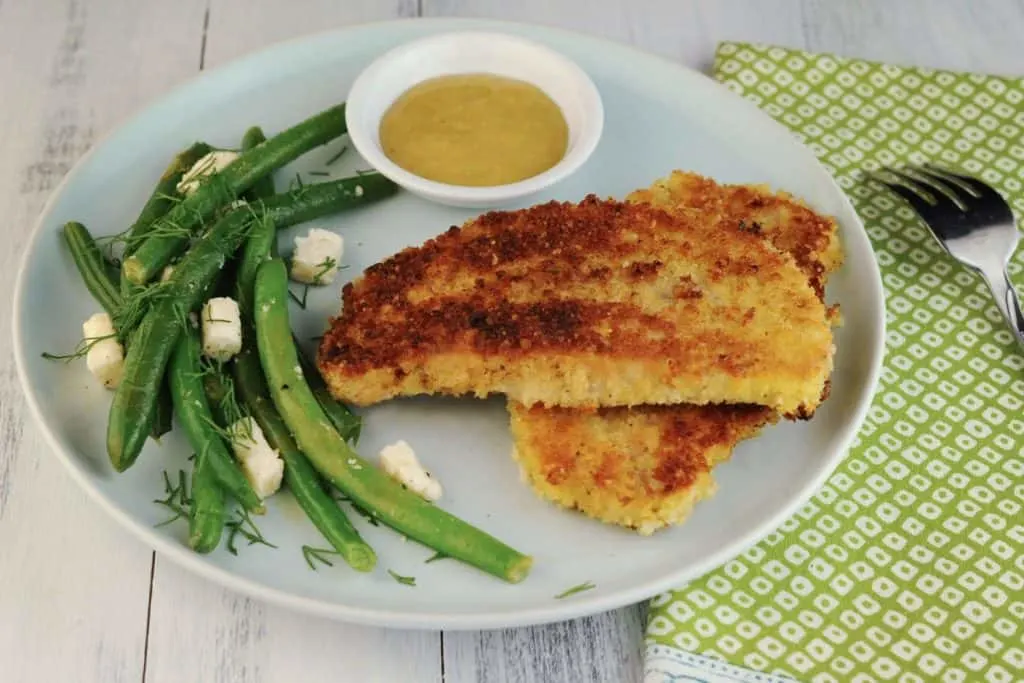
Brine:
The process in which meat is exposed to salt before cooking. A wet brine is when the meat is soaked in a salt water solution. A dry brine is when the salt is rubbed directly onto the meat. The amount of time that a piece of meat is brined for depends on the size of the piece of meat—larger pieces are soaked or exposed to the salt for longer than smaller pieces.
Broil:
To cook directly over or under high heat, usually in an oven.
Brown:
To cook over a high heat, usually on the stove, in order to brown the outside of food. Often used to seal flavor and moisture into meat or poultry.
Butterfly:
To cut a piece of meat through the middle, without cutting completely in half, and then to spread it out so that it resembles a butterfly. Often done with pork chops and shrimp, this action will speed up the cooking of the meat.
Are we missing a cooking term? Share it with us and we’ll add it to this glossary of cooking terms!
Candy:
To impregnate or coat food with sugar.
Caramelize:
To cook sugar until it browns and releases a nutty flavor. The term is also used to describe the act of slowly cooking a food until it turns brown, which is when the natural sugars in the food are released—a prime example being onions.
Chiffonade:
To cut leafy vegetables into thin, ribbon-like strands. (To attempt a chiffonade, try this recipe for Brazilian-Style Power Bowls.)
Chop:
To cut up food into smaller pieces. For a more extensive explanation of chopping terms and styles, including visual guides, go here.
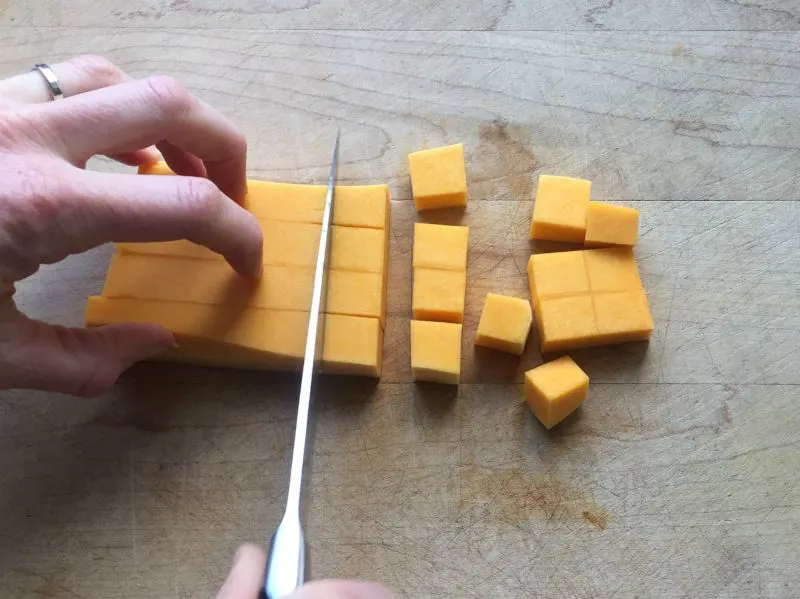
Cream:
To thoroughly mix butter and sugar together, usually with a hand mixer or in a standing mixer, until the mixture is pale yellow and fluffy. This technique is often used when baking cookies or cakes to form the base to which other ingredients are added.
Deglaze:
To loosen the brown, flavorful bits from a pan by adding liquid and then scraping the bits off the pan.
Dice:
To cut food into very small (1/8 to ¼-inch) cubes. For a more extensive explanation of chopping terms and styles, including visual guides, go here.
Double boiler:
A special pot that consists of two saucepans that fit together so that water can be put in the lower pan to boil, sending heat up into the second saucepan in which food is cooked. A double boiler can also be improvised with a heat-safe bowl that is placed on top of a saucepan.
Dredge:
To coat uncooked food, usually with flour, cornmeal, or bread crumbs. (To try dredging, check out our recipe for Buttermilk Bathed Chicken Nuggets.)
Drippings:
The juices and fats that come out of meat or poultry during cooking.
Dutch oven:
A thick-walled pot with a tight-fitting lid. It can be used both on the stove top and in the oven and are useful for braises, stews, soups, and sauces.
Emulsify:
To combine two ingredients together which normally would not mix by agitating them with a whisk, blender, or some other agitation method. An example would be oil and vinegar to form a salad dressing. (To try emulsifying, check out our homemade salad dressing recipes.)
Fold:
To combine light, air-filled ingredients, such as whipped cream or beaten eggs, into a heavier mixture, using a gentle over-and-under motion. (To practice folding ingredients, check out our Ice Cream Roll Cake recipe.)
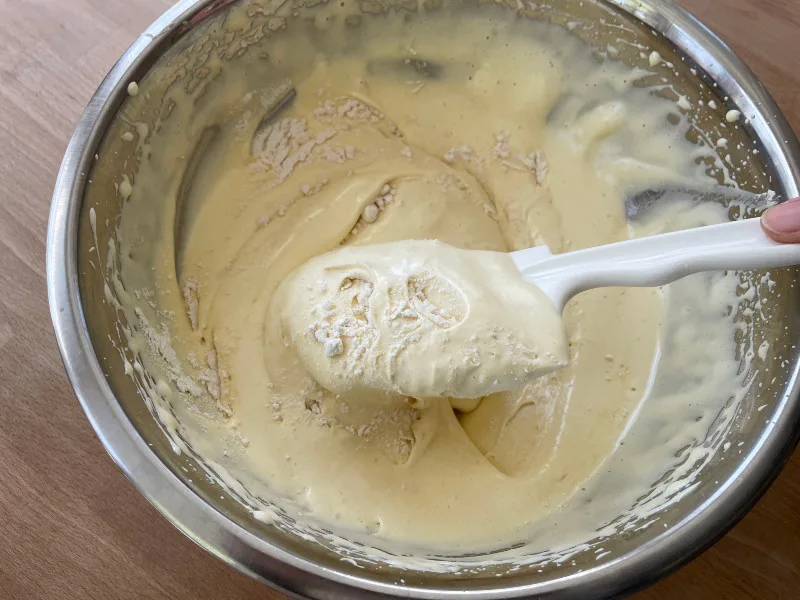
Garnish:
An embellishment or decoration put on food or drink (usually on top) in order to accentuate its taste and/or appearance. Examples would include herbs or a vibrantly-colored spice, such as paprika, sprinkled on top of a dish.
Giblets:
The edible organs of poultry, usually the heart, gizzard, and liver. Sometimes these can be found in a sealed bag in the cavity of a whole chicken, turkey, or duck.
Grease:
To rub the inside of a cooking dish or pan with fat or oil, to prevent sticking.
Are we missing a cooking term? Share it with us and we’ll add it to this glossary of cooking terms!
Julienne:
To cut a food into long thin pieces, like matchsticks. The small, thin nature of these pieces means that the food will cook very quickly. A good technique to use when preparing a stir-fry, for example. For a more extensive explanation of chopping terms and styles, including visual guides, go here.
Knead:
To work a dough, like bread or pasta dough, usually with your hands by stretching, folding, and pushing. This is done in order to develop the gluten in the dough, which will add strength and texture to the final product. For a video, check out the King Arthur Flour tutorial.
Leavening:
An agent added to a dough or batter in order to help the food to rise during cooking. Common leavening agents include baking soda, baking powder, yeast, air, and steam.
Marinate:
To place foods into a flavored liquid in order to transfer the flavors.
Mince:
A chopping technique in which you are cutting a food up into relatively uniform, very small pieces (smaller than a dice or chop). For a more extensive explanation of chopping terms and styles, including visual guides, go here.
Panfry:
See Sauté.
Parboil:
To partially cook by boiling. Usually done as a first step before finishing the cooking with another method.
Pith:
The spongy white tissue lining the rind of citrus fruits such as oranges, lemons, limes, and grapefruits.
Poach:
To cook gently, over a low heat, in barely simmering liquid that barely covers the food.
Proof:
This terms has two different definitions in cooking. One is to allow yeast to combine itself with water until bubbles begin to form, which activates the yeast so that it will serve as a leavening agent. It also refers to a rest period given to certain doughs, after they have been formed into the shape in which they will be baked.
Purée:
To mash or blend food until is has become a liquid, such as soup.
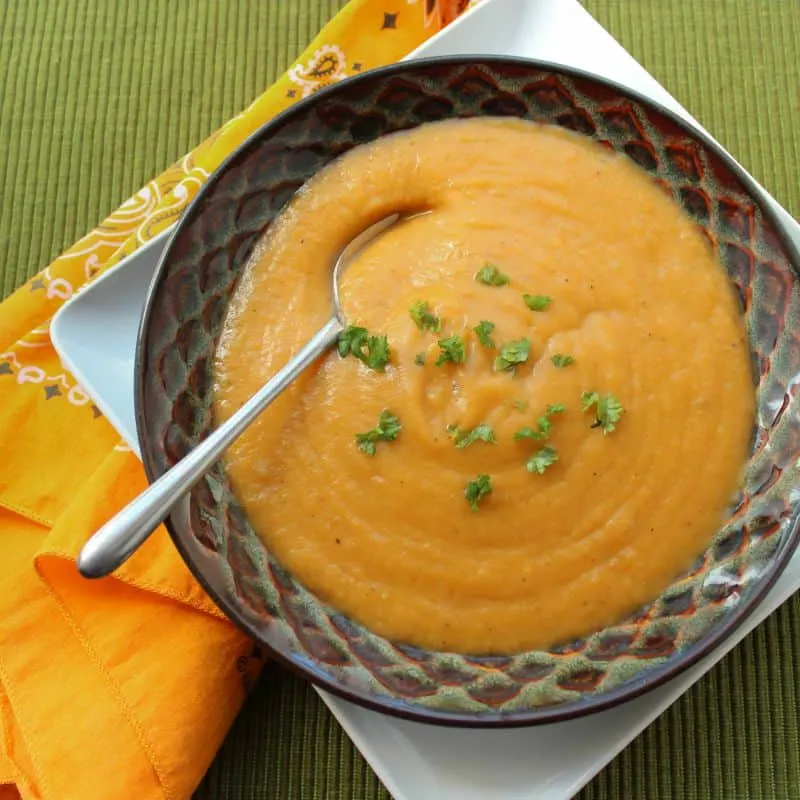
Are we missing a cooking term? Share it with us and we’ll add it to this glossary of cooking terms!
Reconstitute:
To rehydrate a dried food by soaking it in water.
Reduce:
To thicken a liquid or sauce by boiling, in order to concentrate the flavor.
Render:
To cook the fat out of meat or poultry over a low heat, in order to preserve the drippings.
Rind:
The thick outer layer of some fruits, such as oranges, lemons, and limes, as well as certain cheeses such as brie, Parmesan, and camembert.
Roast:
To cook a large piece of meat or poultry, uncovered, using dry heat in an oven. Or to cook vegetables, coated in a small amount of oil, in a high, dry heat (for more information on roasting vegetables, click here.)
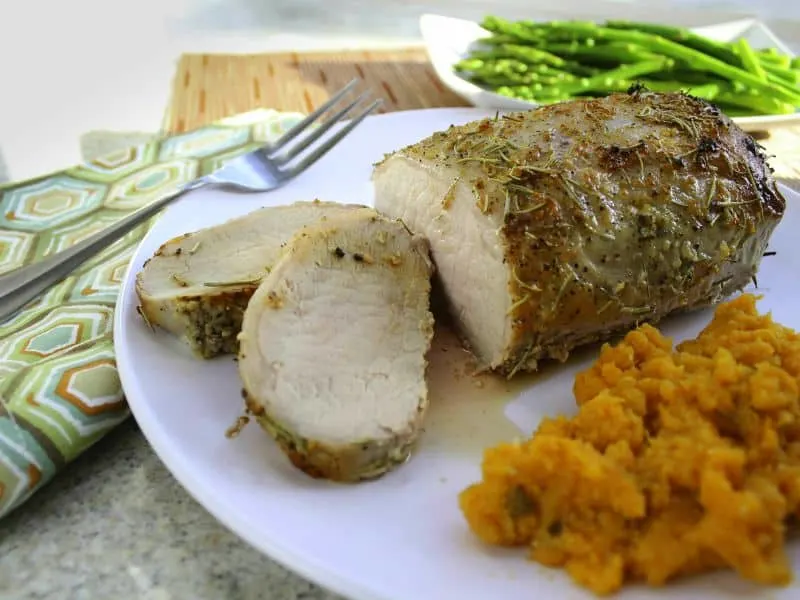
Roux:
Flour and fat that has been cooked together to form a paste which will thicken a sauce.
Sauté:
To cook food in a small amount of fat over a relatively high heat.
Scald:
To heat liquid to just short of boiling, until bubbles begin to form around the edge, but a boil has not begun.
Sear:
To brown the surface of meat with a quick cook over a high heat so that the juices are sealed in.
Score:
To make shallow cuts in the surface of meat or dough. In baking, this is done to allow steam to escape and also for decoration. For meats, it allows marinades to soak in or fat to drain off.
Simmer:
To cook in liquid that is just below boiling. You know a mixture is simmering when bubbles are forming but do not burst.
Skewer:
A thin wooden or metal shaft that is used to hold together meat and/or vegetables for grilling, broiling, or roasting.
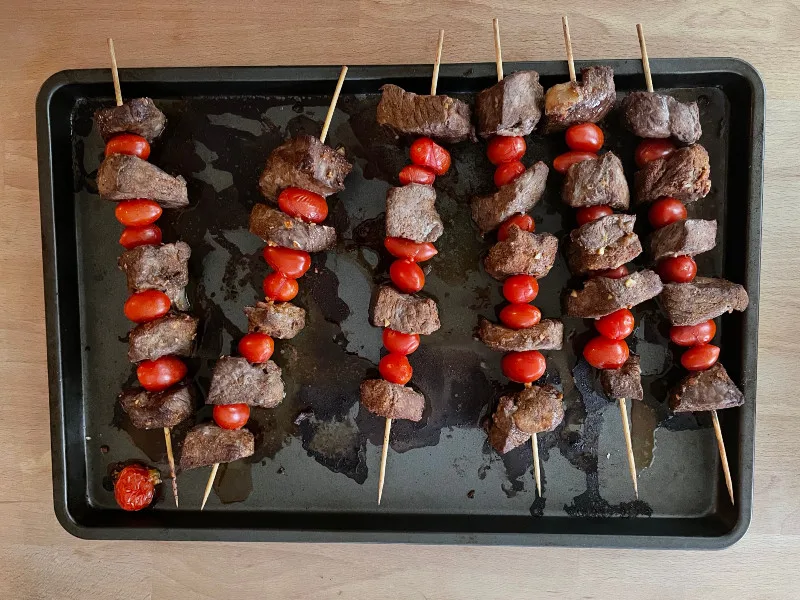
Skim:
To remove any surface foam or fat from a liquid.
Slurry:
A mixture of starch (usually cornstarch or flour, and sometimes arrowroot or potato starch) and cold water that is whisked together and then used to thicken soups or sauces. (Note: if, instead, the starch is just added directly to the hot liquid it will clump, leaving your sauce or soups with lumps in it.)
Spatchcock:
To split poultry by removing the backbone so you can flatten it, resulting in crispier skin and even, quicker cooking.
Are we missing a cooking term? Share it with us and we’ll add it to this glossary of cooking terms!
Springform pan:
A kind of bakeware where the sides can be separated from the bottom. This helps to eliminate the risks associated with remove cakes from traditional pans. They are very useful for cheesecakes, crusted tarts, and ice cream cakes because they can be removed without damage to their tops, bottoms, or sides.
Steam:
To cook food on a rack or in a steamer that has been set over a pot of boiling water.
Steep:
To soak coffee, tea, or herbs in hot or boiling water so that the liquid takes on the flavor of the food being soaked.
Stew:
To cook food in liquid, covered and over a low heat so that the liquid does not evaporate.
Stir-fry:
To quickly cook small pieces of food over a high heat, using a relatively small amount of fat or liquid, and stirring constantly. (To practice this skill, check out our Chicken Stir-Fry with Snow Peas and Cashews recipe.)
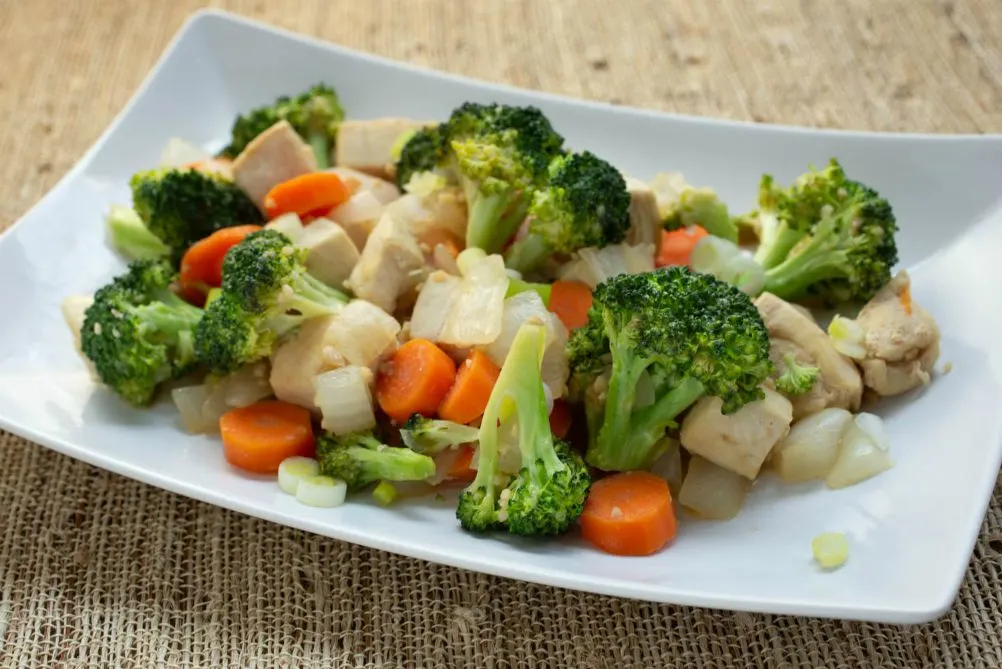
Stock:
A strained liquid that is the result of cooking vegetable, herbs, and possibly meat or fish in water over a low heat for hours. The flavorful liquid is often used in soups, stews, and sauces. (For more information on stock, check out our post on how to make stock in a slow cooker or on the stove.)
Tenderize:
To prepare meat in such a way that it will be more tender. This can be done by pounding, piercing, marinating, or braising the meat.
Truss:
To tie whole poultry with string or skewers in order to ensure even cooking.
Whip:
To beat food with a whisk or mixer in order to incorporate air and build volume.
Yeast:
A living microscopic organism that turns sugars or starch into alcohol and carbon dioxide. Baker’s yeast is used in the leavening of certain doughs, while brewer’s yeast is used in the brewing of beer and making of wine.
Zest:
The outer, colored part of the peel of citrus fruit. Often used as a flavor enhancer.
We hope that this glossary of cooking terms if helpful. If you come across other cooking terms that we missed or that you would like us to define for you, please share them in the comments and we will fill in the blanks!
If you would like more support with meal planning and preparation, sign up for a free trial of our online meal planning service and see how simple planning, easy cooking, and joyful eating can be!
